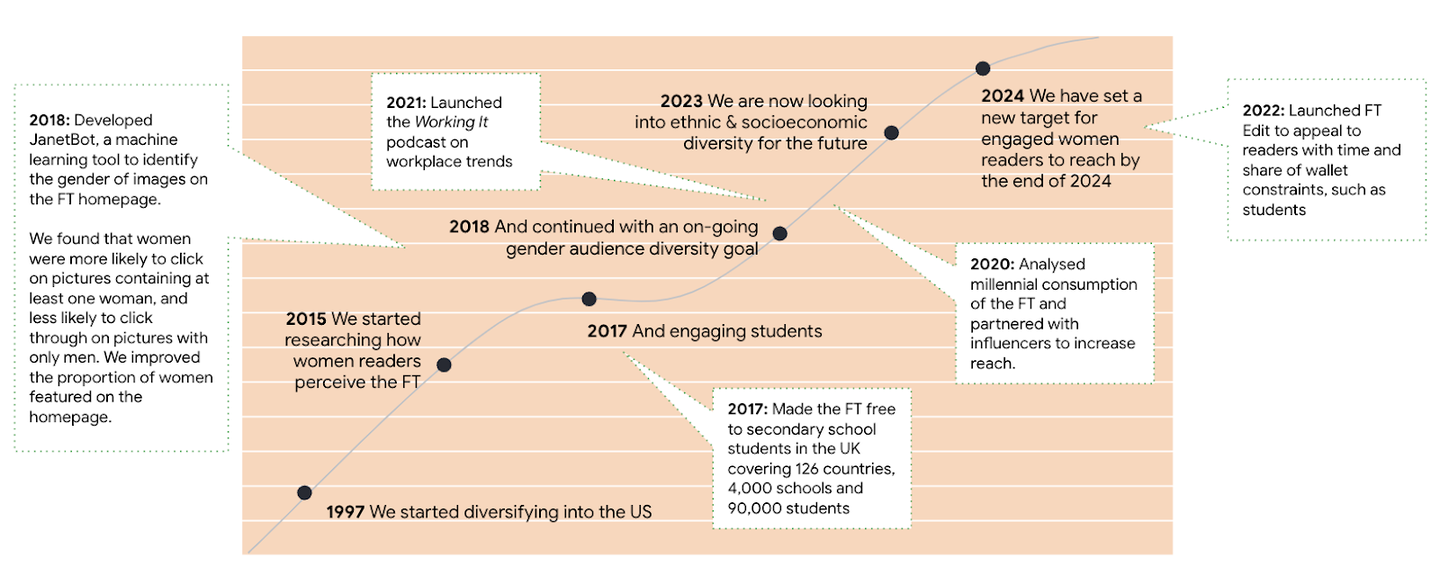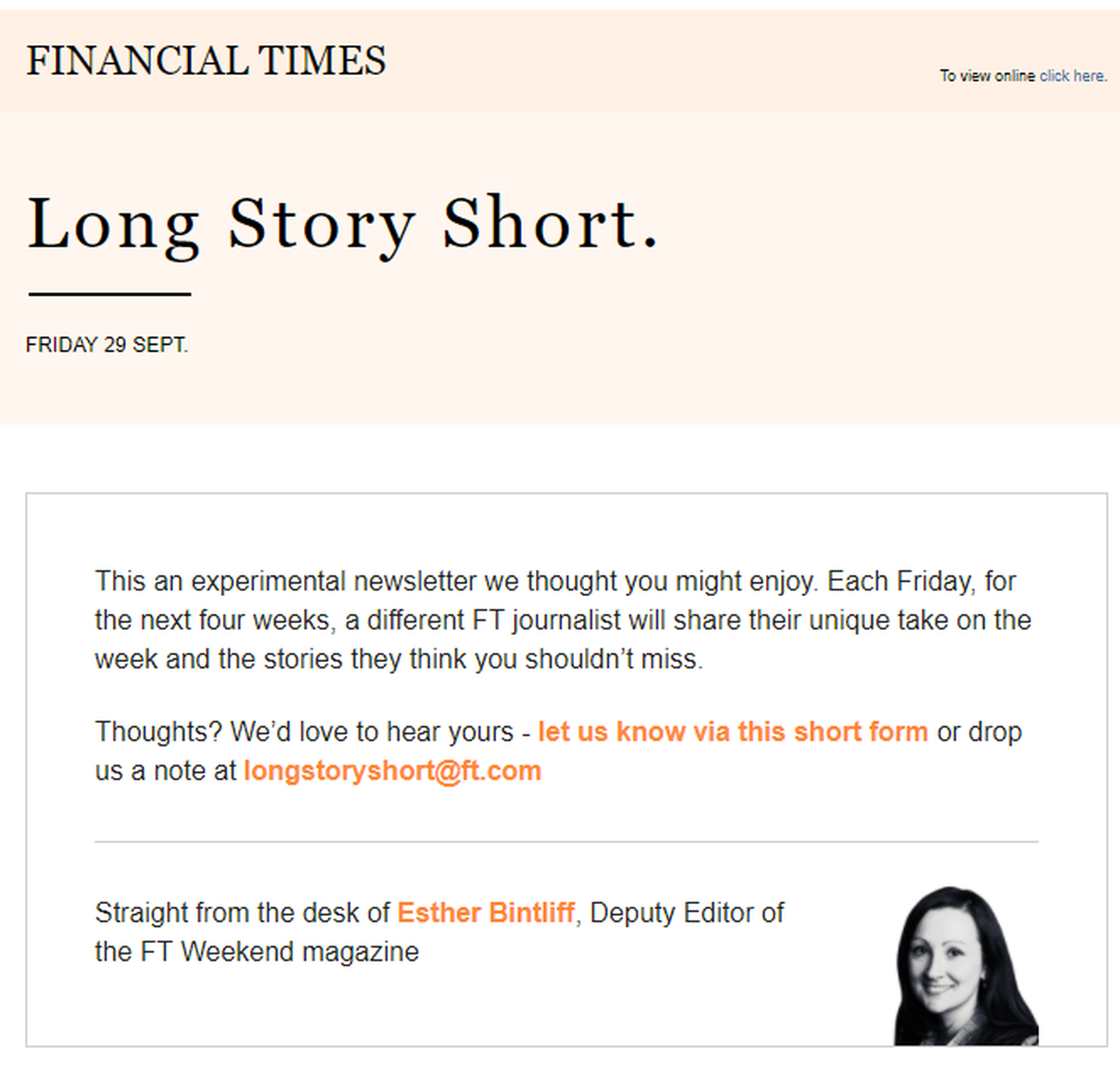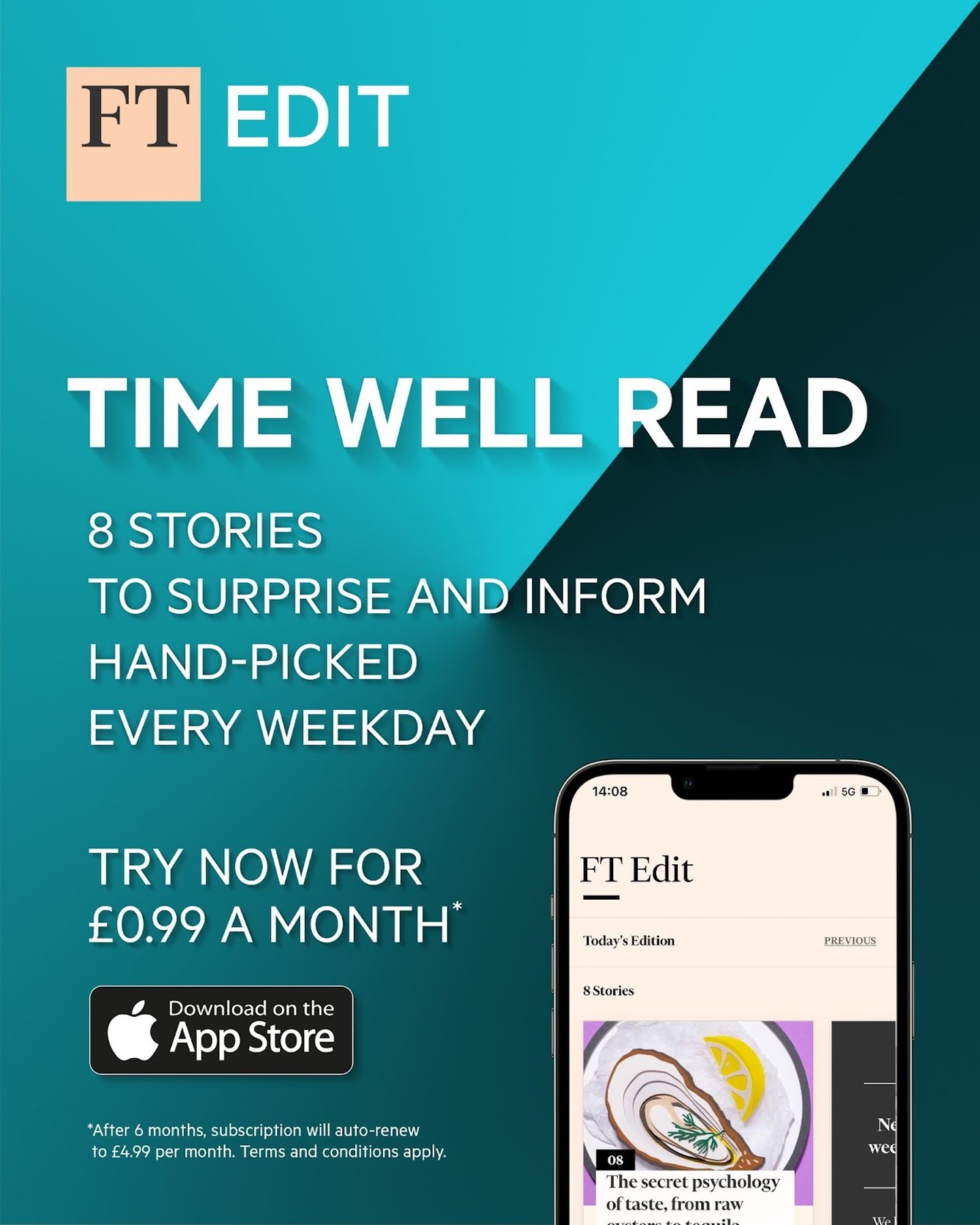The diversity imperative
News organisations around the world are caught up in a battle for audiences, especially for those target groups who are switching off the news altogether. The challenge is particularly acute for news providers with an organisational mandate for reaching audiences in all sections of society. Put simply, diversity is no longer something that publishers can ignore. As well as the evident moral justification for representing a cross-section of society, there is a growing commercial motive too. News media businesses are beginning to recognise its benefits for attracting talent, understanding audience needs and refining content and product offerings.
Audience diversity is a journey, rather than a destination; at the FT, we have seen significant growth from various initiatives over the years, but we still have work to do.





Case Study 1: The FT’s ‘Long Story Short’ Newsletter
Challenge: According to a focus group of women, conducted a few years ago, in 2017, the FT brand was seen as masculine and just about finance. That said, the women surveyed were interested in business content and didn’t want ‘women-only content.’ An added challenge discovered is that women are generally ‘time poor’ as they are often multitasking. Finally, the study found that there are lots of different types of women, that shouldn’t be thought of as a homogenous group with a ‘one size fits all’ approach.
Experiment: The FT launched a time-conscious newsletter called ‘Long Story Short’ which was sent to over 25,000 women and a control group of 8,000 male lookalikes. The newsletter came from a female editor and was a selection of weekly stories ‘not to be missed,’ similar to a week in review.





Result: The newsletter increased women’s engagement by 8%. ‘Long Story Short’ saw higher click-through rates for the woman who became engaged. The newsletter still exists today and, along with ‘Working It,’ is one of the FT’s most popular newsletters with female readers.
Case Study 2: The FT Edit
Challenge: The FT is a premium-priced subscription. Most readers gain access via their companies and are predominantly working professionals from industries such as finance. This makes engaging with younger readers a challenge as they often cannot afford the expensive B2C subscription. They also have limited time to dedicate to reading long-form journalism as they are not reading for work but rather to stay informed. Young people are increasingly tuning out from the news due to information overload also known as ‘doomscrolling.’
Experiment: The FT’s product team decided to develop ‘The Edit’ a lower-priced App that presents the reader with 8 curated stories to read per day.





Result: The App received 140,000 downloads within a year of launching and also has several thousand paying subscribers, many of them from ‘new’ audiences such as non-core geographies or demographics. The trial conversion rate has been better than expected, with approximately 88% of free trial users deciding to stay on after the end of the free period to pay the 99p fee for the following six months.
About the author





Aliya is a Senior Consultant at FT Strategies. She has over six years of experience across Media, Finance and Technology. Previously, she worked at Dataminr, bringing A.I. technology to newsrooms across EMEA. Prior to that, she worked as a journalist at Bloomberg and was a member of the British National Fencing Team. She has a BA from Harvard University and an MBA from Said Business School, University of Oxford.
